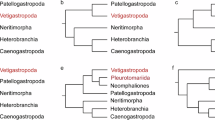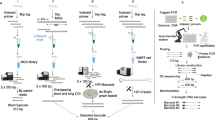Abstract
The description of all living species is an ultimate goal of biology. Species description, however, is a time-consuming effort that requires specialized taxonomists in the vast array of existing taxa. With the current rate of habitat loss, it is plausible to assume more species are becoming extinct than what we could possibly describe. High-throughput sequencing together with the appropriate bioinformatic analyses is revolutionizing the knowledge regarding microbial biodiversity, but can also assist in the unraveling of the diversity of higher Eukaryotes. Here, we describe how transcriptome sequencing, de novo assemble, and BLAST analyses helped to identify the taxa of an unknown and abundant species sampled on the banks of a highly contaminated river in Rio de Janeiro, Brazil. This species is currently being described as a possible new species of Collembola (Hexapoda). In total, 4.589.437 paired-end 150 bp reads passed quality control and were used to assemble a de novo transcriptome, resulting in 44.013 transcripts with N50 of 1.338 bp. Of these assembled transcripts, 4.112 had a BLAST hit, with Folsomia candida (Collembola) being the most frequent species. Specimens of this sampled species were sent to a taxonomist specialized in Collembola for accurate taxonomic identification. The sampled specimens are being fully described and probably belong to a new species of Orthonychiurus (Hexapoda, Collembola, Onychiuridae).
Access this chapter
Tax calculation will be finalised at checkout
Purchases are for personal use only
Similar content being viewed by others
References
Larsen, B.B., Miller, E.C., Rhodes, M.K., Wiens, J.J.: The quarterly review of biology inordinate fondness multiplied and redistributed: the number of species on earth and the new pie of life (2017)
Mora, C., Tittensor, D.P., Adl, S., Simpson, A.G.B., Worm, B.: How many species are there on earth and in the ocean? PLoS Biol. 9 (2011). https://doi.org/10.1371/journal.pbio.1001127
Dirzo, R., Raven, P.H.: Global state of biodiversity and loss. Annu. Rev. Environ. Resour. 28, 137–167 (2003). https://doi.org/10.1146/annurev.energy.28.050302.105532
Storch, D., Šímová, I., Smyčka, J., Bohdalková, E., Toszogyova, A., Okie, J.G.: Biodiversity dynamics in the Anthropocene: how human activities change equilibria of species richness. Ecography 2022 (2022). https://doi.org/10.1111/ecog.05778
Fontaine, B., Perrard, A., Bouchet, P.: 21 years of shelf life between discovery and description of new species (2012). https://doi.org/10.1016/j.cub.2012.10.029
Bellinger, P.F., Christiansen, H.E., Janssens, F.: Checklist of the Collembola of the World (2009)
Miller, M.B., Yan, Y., Wu, Y., Hao, B., Mains, R.E., Eipper, B.A.: Alternate promoter usage generates two subpopulations of the neuronal RhoGEF Kalirin-7. J. Neurochem. 140, 889–902 (2017). https://doi.org/10.1111/jnc.13749
Mcpherson, C.E., Eipper, B.A., Mains, R.E.: Genomic organization and differential expression of Kalirin isoforms (2002)
Peltonen, S., Rehn, M., Pihlajaniemi, T.: Alternative Splicing of Mouse a 1 (XIII) Collagen RNAs Results in at Least 17 Different Transcripts, Predicting cd (XIII) Collagen Chains with Length Varying Between 651 and 710 Amino Acid Residues. Mary Ann Liebert, Inc. (1997)
Author information
Authors and Affiliations
Corresponding author
Editor information
Editors and Affiliations
Rights and permissions
Copyright information
© 2022 The Author(s), under exclusive license to Springer Nature Switzerland AG
About this paper
Cite this paper
Magalhaes, M.G.P., Melo, M.A.F., Queiroz, G.C., dos Santos Moreira, A., Degrave, W., Parente, T.E. (2022). How Bioinformatics Can Aid Biodiversity Description: The Case of a Probable New Species of Orthonychiurus (Collembola, Hexapoda). In: Scherer, N.M., de Melo-Minardi, R.C. (eds) Advances in Bioinformatics and Computational Biology. BSB 2022. Lecture Notes in Computer Science(), vol 13523. Springer, Cham. https://doi.org/10.1007/978-3-031-21175-1_13
Download citation
DOI: https://doi.org/10.1007/978-3-031-21175-1_13
Published:
Publisher Name: Springer, Cham
Print ISBN: 978-3-031-21174-4
Online ISBN: 978-3-031-21175-1
eBook Packages: Computer ScienceComputer Science (R0)




